Christmas cactus in their native receive all their nutrients naturally since the roots have more space to grow and feed on. Indoor conditions are different, and they have limited space to grow in the pot, where it may lack required nutrients.
This makes fertilizing essential for your Christmas cactus to keep them thriving. But how much food do Christmas cactus need? And how often should you fertilize them?
When grown indoors, you should fertilize your Christmas cactus with a dilute dose of balanced fertilizer once every month from late winter to late summer. Using an all-purpose balanced fertilizer of N-P-K ratio 20:20:20 or 10:10:10 would be ideal.
Christmas cacti are known to be holiday plants, and with blooming, they bring the Christmas season. All you need to do is fertilize in the right amount, in the right dose, and at the right time to keep them thriving and full of nutrition.
We will thoroughly study all the points relevant to fertilizing your Christmas cactus in this guide. We will cover the best fertilizer for your plant, how often to feed, and how to feed your Christmas cactus.
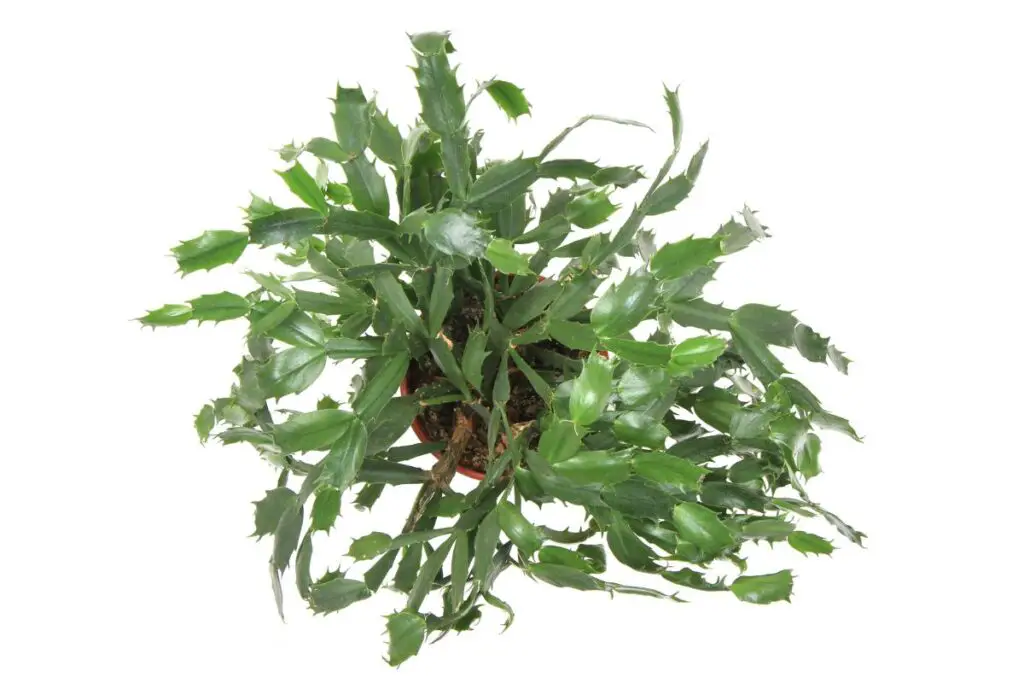
Should I fertilize my Christmas cactus?
Fertilizer is important to support your plant’s growth, especially when growing indoors, away from their natural habitat. Their nutrient needs might not be fulfilled if not fed.
With frequent watering, the nutrients in the soil flush out, and the soil cannot support the plant’s growth due to a lack of nutrients.
Therefore, we need fertilizer to supply enough nutrients into the soil, which the entire plant gradually absorbs.
Christmas cactus copes with poor nutrition but feeding the right amount and at the right time is appreciated. Here, less feeding is recommended and to be done only in the growing season.
If Christmas cacti are not fed at the right time, they may suffer from the following issues:
- Slow growth
- Yellow and brown leaves
- Weak plant
Making sure your plant gets the right amount of food at the right time is important. It will support their growth and support flowers to grow. This is stored in the form of energy in the plant to fuel the production of flowers.
When should I fertilize my Christmas cactus?
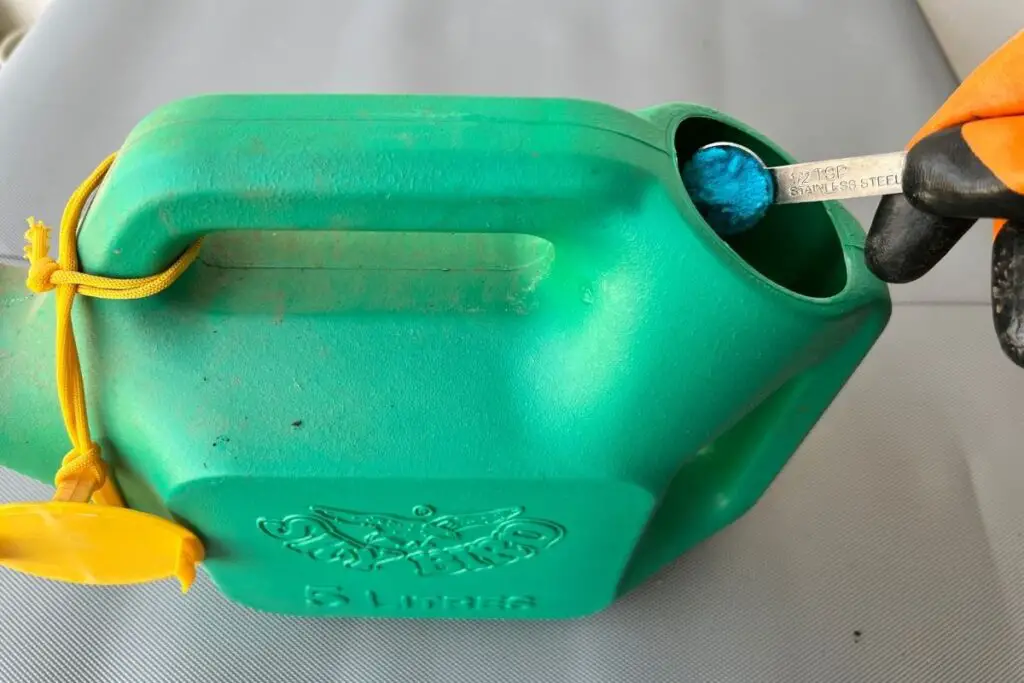
Christmas cactus are not heavy feeders, and most importantly, you should not feed them in the dormant period. During winter and autumn, you should not feed the plant at all.
It would be best to fertilize them from April to October as that helps the plant grow and be in healthy condition to form buds and get them fully blooming during Christmas.
They can even stay healthy without fertilization, but sometimes growing in indoor conditions may make them weak and have insufficient nutrients. So feeding them will be good for them.
The idea is to fertilize them from late winter to late summer. You can feed them according to the conditions in your location, and you don’t have to fertilize in between, i.e., in winters.
You should also avoid any fertilizer after they have bloomed for a short period in the early spring. When they bloom, fertilizing can lead to falling buds and affect the blooming adversely.
Looking for gardening supplies? We have tested 100's of products before recommending them to you guys. Check out our best pick below:
| Image | Gardening Supplies | Best Price? |
|---|---|---|
 Top
Top Top
Top | Raised Garden Bed Kit | Check On Amazon |
 | XLUX Soil Moisture Meter, Plant Water Monitor, Soil Hygrometer Sensor for Gardening, Farming, Indoor and Outdoor Plants, No Batteries Required | No Results |
 Top
Top Top
Top | 82 Pcs Garden Tools Set and Extra Succulent Tools Set | Check On Amazon |
 | Joeys Garden Expandable Garden Hose with 8 Function Hose Nozzle, Lightweight Anti-Kink Flexible Garden Hoses, Extra Strength Fabric with Double Latex Core, (50 FT, Black) | No Results |
 Top
Top Top
Top | Dual Chamber Compost Tumbler | Check On Amazon |
 Top
Top Top
Top | Sunnyglade Plant Stakes | Check On Amazon |
 Top
Top Top
Top | Organic Cold Pressed Neem Seed Oil | Check On Amazon |
 Top
Top Top
Top | Mighty Mint Gallon :-Insect and Pest Control Peppermint Oil | Check On Amazon |
 Top
Top Top
Top | Scotts DiseaseEx Lawn Fungicide | Check On Amazon |
 Top
Top Top
Top | Jacks Classic 20-20-20 All Purpose Fertilizer | Check On Amazon |
 Top
Top Top
Top | 30,000 Seeds Pollinator Attracting Wildflower Mixture | Check On Amazon |
 Top
Top Top
Top | Survival Vegetable Seeds Garden Kit-Over 16,000 Seeds | Check On Amazon |
How often should you fertilize the Christmas cactus?
Christmas cactus need proper fertilizer and nutrients to thrive even beyond the holidays. They produce beautiful flowers in several colors if they are provided with appropriate conditions.
These plants in their tropical region survive without fertilizing. They take their nutrients from the debris and leaves beside the trees. But indoors, they need fertilizer to thrive and bloom.
Abloom formula houseplant balanced fertilizer makes excellent food for Christmas cactus, diluted with water to half the strength.
You can also fertilize with 1tsp Epsom salts mixed with 1-gallon water. This has high magnesium content and fulfills other nutrient needs of the plant.
You can choose a fertilizer with a slightly higher phosphorus content as it enhances blooming. Fertilizer once a month in the growing season.
In the case of the Christmas cactus, choosing the fertilizer is not as important as the right amount. Fertilize as advised only.
What is the best fertilizer for Christmas cactus?
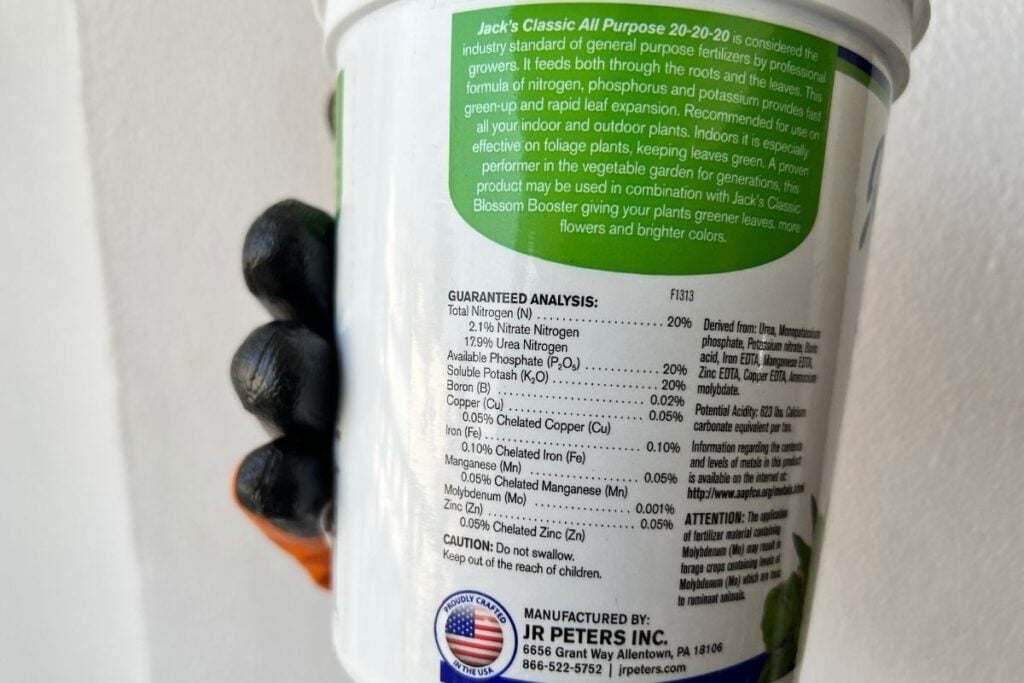
Fertilize your Christmas cactus with a high-quality, all-purpose balanced fertilizer. We recommend 10-10-10 or 20-20-20 formulations by diluting the recommended dosage to half the strength.
That is done to save the plant from over-fertilizing. If you feed without diluting the fertilizer, the roots may burn, and the entire plant will suffer.
The formulation is the ratio of N-P-K, which stands for Nitrogen, phosphorus, and potassium. This ratio differentiates one fertilizer from another.
Let us understand why these nutrients are important for the growth of plants by knowing their functions.
Nutrients and their functions:
Nitrogen
- Constituent of protein
- Promotes growth
- Production of chlorophyll and nucleic acid
Phosphorus
- Important in energy transfer
- Promotes cellular growth
- Vigor and disease resistance to plants
Potassium
- Increases efficiency in leaf to manufacture sugar and starch
- Boosts immunity
- Promotes root development and growth
Christmas cacti need an NPK ratio of 20-20-20, which works wonders for these plants and helps plants grow. Nitrogen promotes new growth, phosphorus helps form buds, and potassium promotes root growth.
If you fertilize in the right amount with the right quantity, you will improve the quality of the plant and support their blooming. If you over-fertilize, you may lose blooming and the plant in the worst case.
Best fertilizer for Christmas cactus
Here are some of the best fertilizers for your Christmas cactus:
- Miracle-Gro Water Soluble All Purpose Plant Food
- J R Peters 52024 Jacks Classic No.1.5 20-20-20 All Purpose Fertilizer
- Espoma Company Organic Indoor Plant Food
How do you fertilize the Christmas cactus?
Fertilizing Christmas cactus in the right way is also important. Fertilize them from the late winter to late summer.
Follow some simple steps to feed your Christmas cactus properly:
- Take a bucket or watering can to mix the fertilizer.
- Use a high-quality, balanced fertilizer with an NPK ratio of 20-20-20. You can also feed with cactus fertilizer, which is easily available in the market.
- Please read the instructions on the package and dilute it to twice as much water as recommended.
- Water, the plant with this mixture till the excess water comes out of the drainage system.
- You can even store his mixture and use it the next month to fertilize your plant.
Things to keep in mind while fertilizing
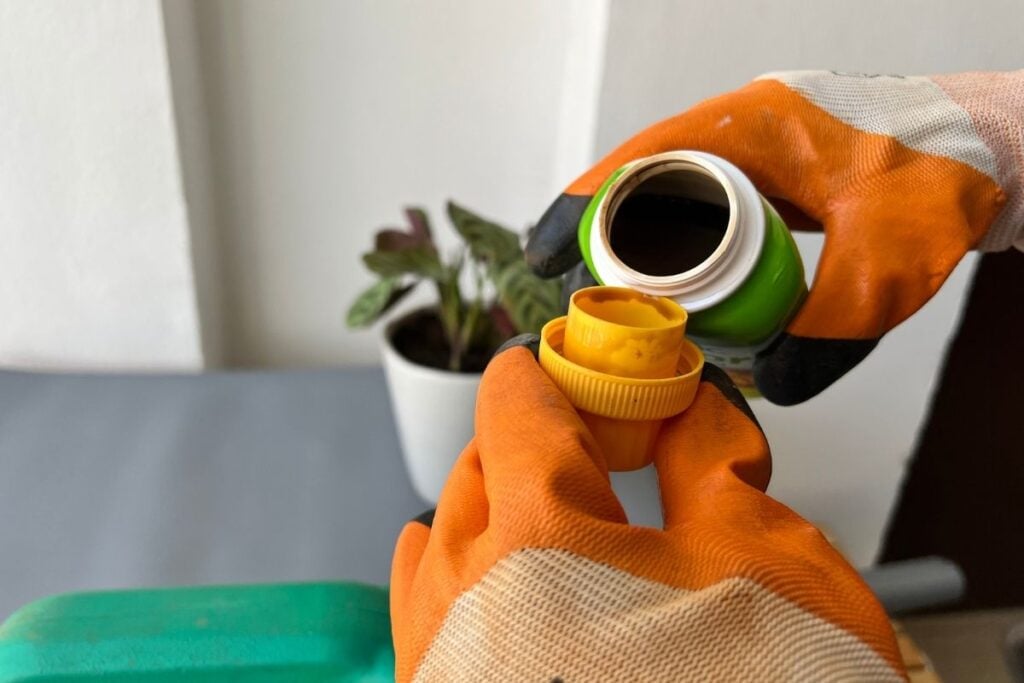
This is the most important part of the article. Often we discuss what is good and bad for our plants, missing small points which lead to disaster.
Below we have collected all the important things to keep in mind while fertilizing your Christmas cactus:
- Use the right fertilizer: Using just any fertilizer, you get your hands on will prove to be dangerous for your plant’s health. Christmas cacti need high-quality, balanced fertilizer or cactus fertilizer is also good for them. So choose wisely.
- Add less fertilizer if unsure: Use the right amount of fertilizer to feed your Christmas cactus and if not sure of the dosage, then prefer feeding with less food than more. This is always a better option and will save your plant from over-fertilizing issues.
- Proper drainage system: drainage system is very important to keep the plant roots rot-free. It also ensures that excess salt is flushed out, accumulating due to fertilizing.
- Leach before changing conditions for the plant: If you are moving your plant from one condition to another, for example, moving it to a brighter spot, it is essential to remove excess fertilizer from the pot.
It can be done by either sinking the pot in a bathtub or flushing the soil with a strong stream of water and then allowing the excess water to drain.
- Add water: while watering, adds excess water so that the soil completely gets it and the excess salt flushes out of the drainage holes.
- Double-check the measurement to avoid overfeeding: It is always recommended to be extra cautious and double-check the dosage measurement to avoid over-fertilizing you are giving your plant to fertilize.
- Don’t combine fertilizer: If you combine two types of fertilizer, for example, slow-release fertilizer with a soluble fertilizer, you may not be able to know how much fertilizer your plant is receiving. To avoid this situation and stick to one type of fertilizer.
- What to do if steaming goes wrong: Steaming is done to disinfect the soil, but newbies might mess up and heat the soil too much. It is better to leach the soil and let it rest for a few weeks.
Can you over-fertilize a Christmas cactus?
No, overfertilization burns the roots and gradually the entire plant. For more clear understanding, you will notice the following signs that you overfeed your Christmas cactus:
- Weak stems
- Stunted growth
- Yellow and brown leaves
With regular fertilizing, they often tend to have salt build-ups; this can be removed by thoroughly washing the plant with water and letting it recover for a few weeks. When the plant seems healthy and the soil is salt-free, you can start the fertilizing routine.
Final words
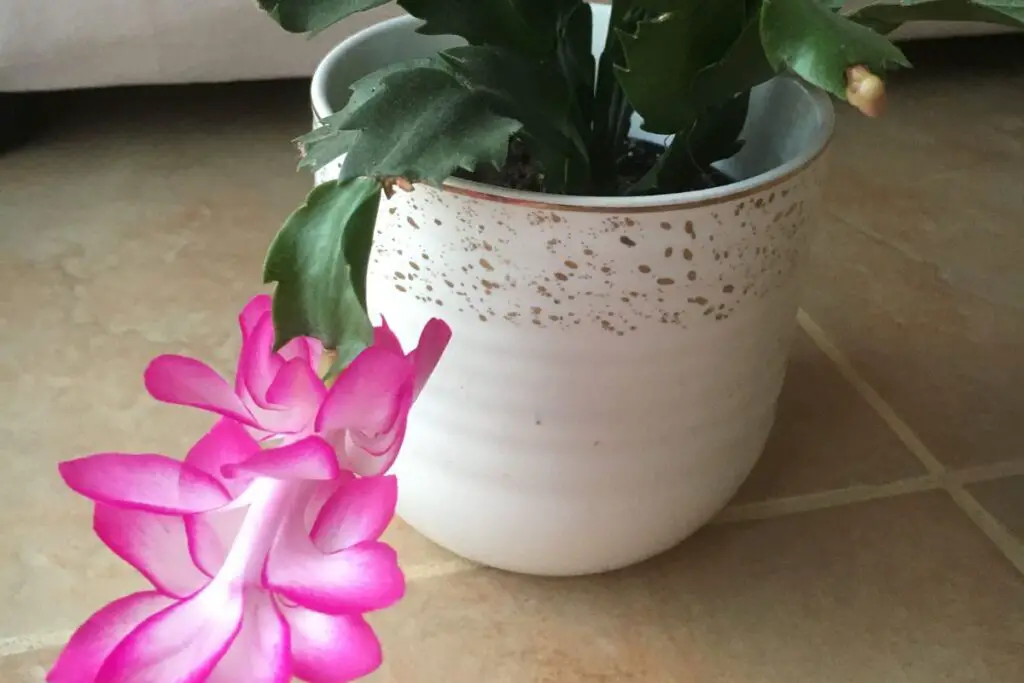
Fertilizer is important for almost all plants to meet their nutrient needs. Christmas cactus also need to stay healthy and produce flowers.
Fertilize them once a month from the late winter to late summer. Do not feed in the dormant period.
Fertilize with all-purpose fertilizer with an NPK ratio of 20:20:20 or cactus fertilizer. Adulterate the dosage to half the recommended strength.
Always water the plant after fertilizing and give them sufficient light, but away from direct light.
Reference: NC State University, Nebraska Extension in Lancaster County, Researchgate, Texas A&M University, Chicago Botanic Garden.

Christmas cactus – mine is older and recently took it out of the pot because I noticed hard white spots, like fungus. When I took it out and brushed off the white spots, I did notice the stem is dark brown. I don’t know if that is the way it should look? I scraped away some of it and under the brown it’s green. Unfortunately I did NOT realize that fungus was sucking the life out of the plant and I hope I can save it. I have it sitting in water and don’t know if I should put it into potting soil? Any ideas??
If you’ve removed all the fungus and the stem is still firm, you can try to save the plant by repotting it in fresh, well-draining potting soil. Make sure the pot has drainage holes to prevent overwatering. Water the plant only when the top inch of soil is dry to the touch and avoid getting water on the leaves, as this can encourage fungal growth.
If the stem is mushy or soft, it’s likely that the plant is beyond saving. In that case, it’s best to discard the plant and start fresh with a new one.
Overall, it’s important to keep a close eye on your Christmas cactus and take action at the first sign of fungal growth or other issues to prevent further damage to the plant.